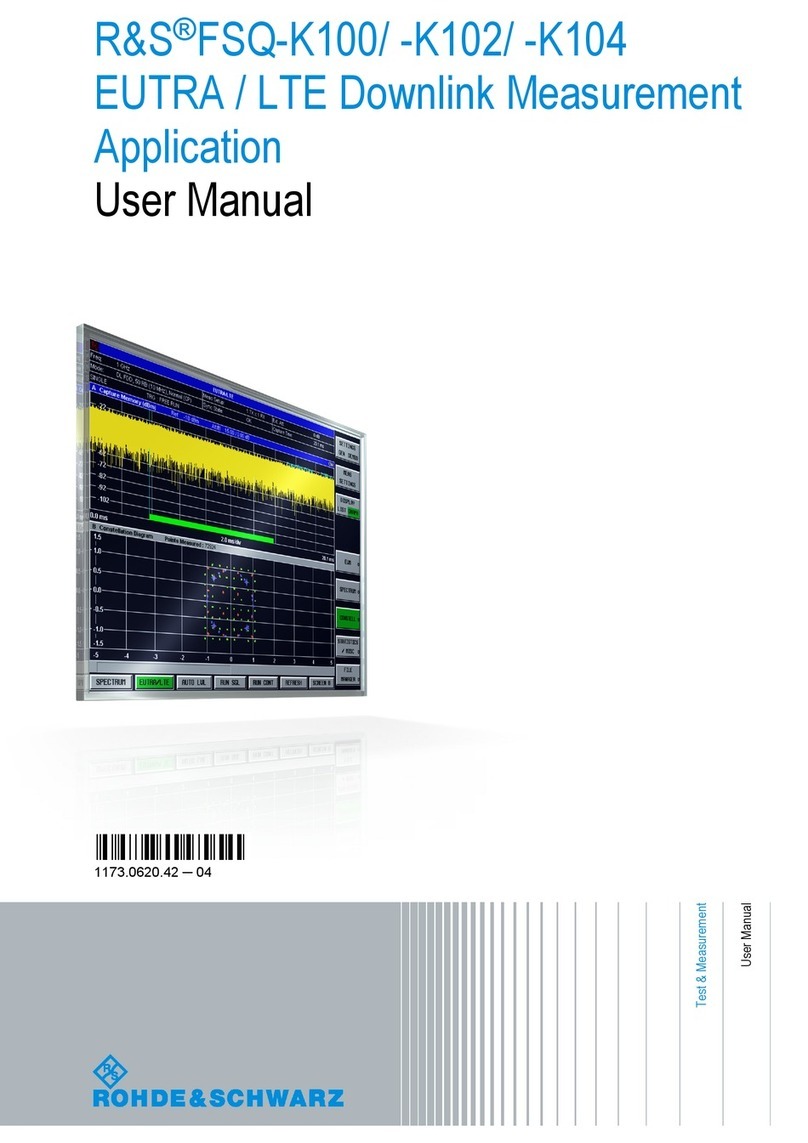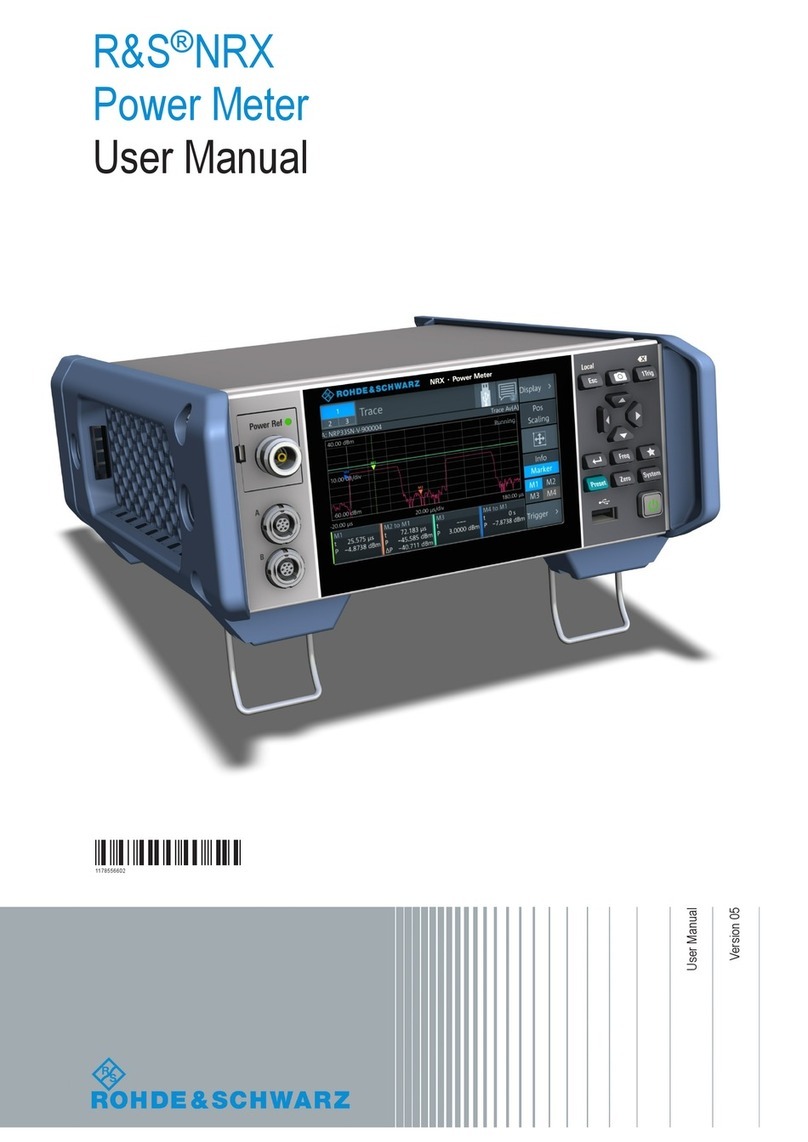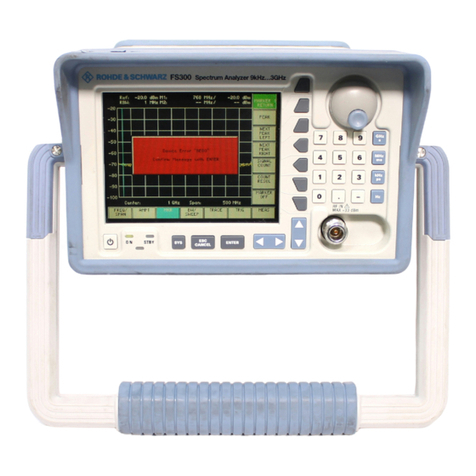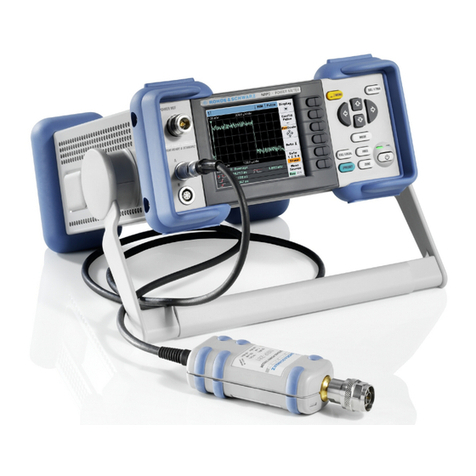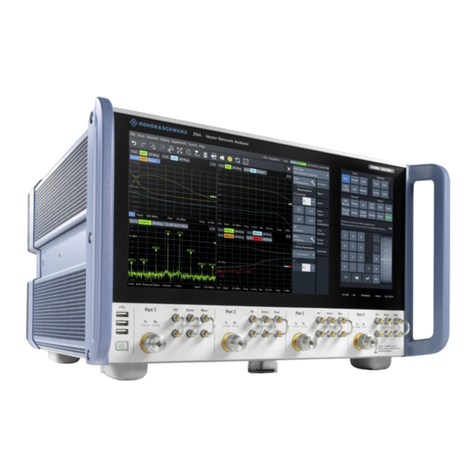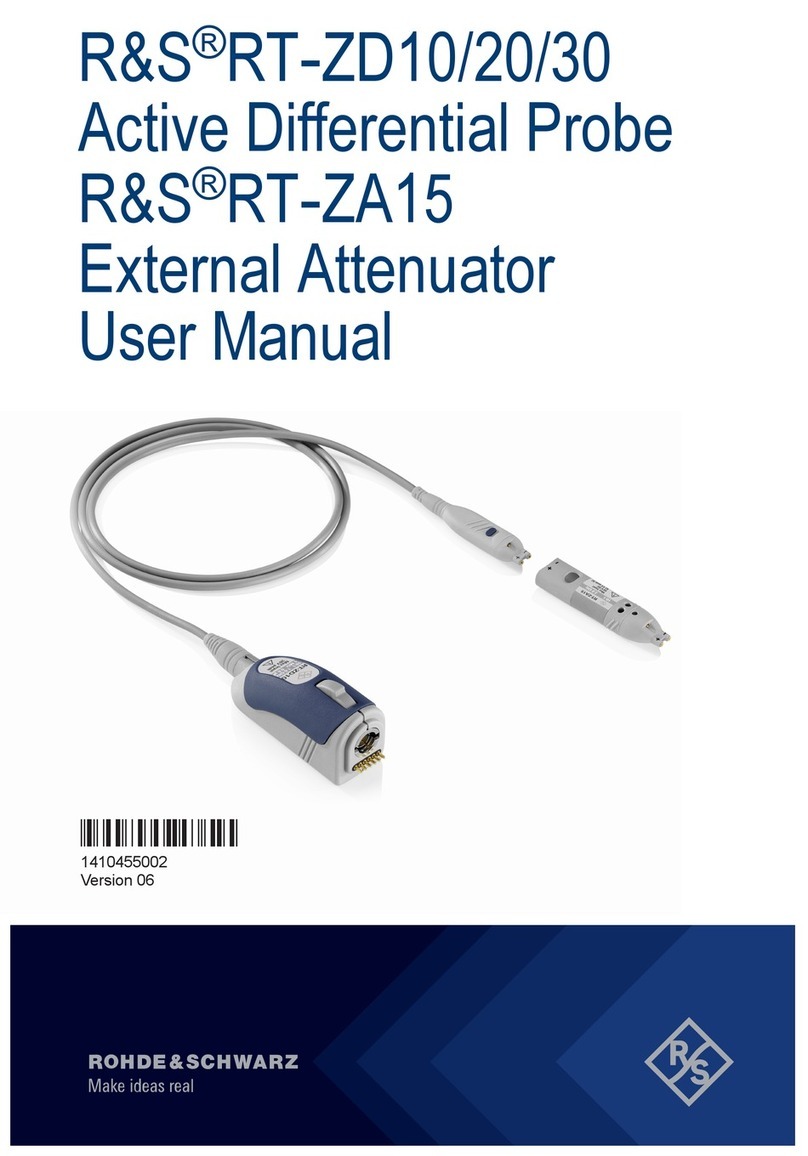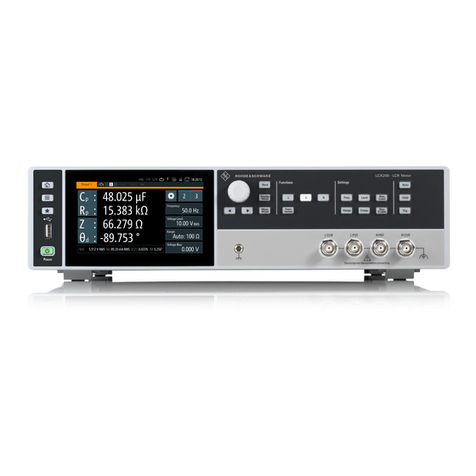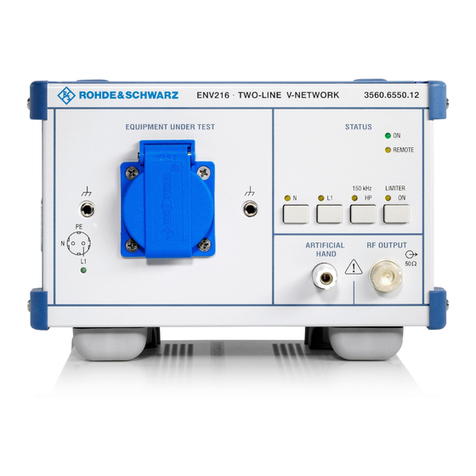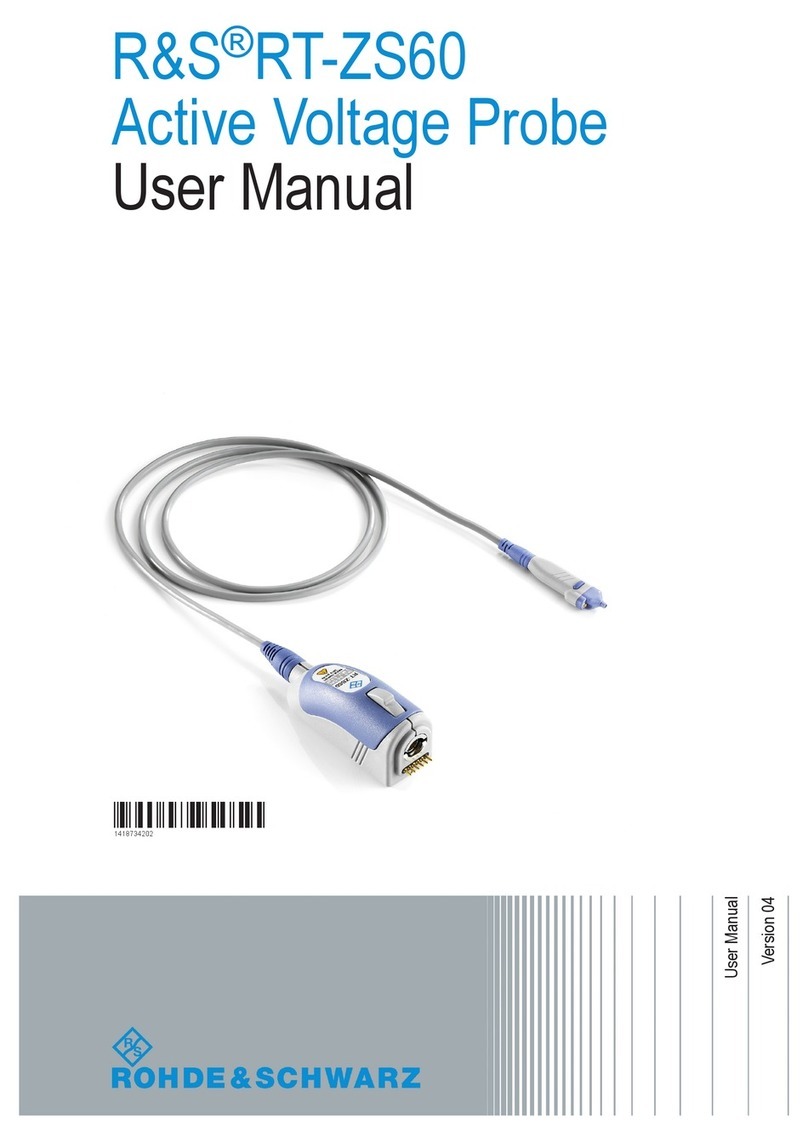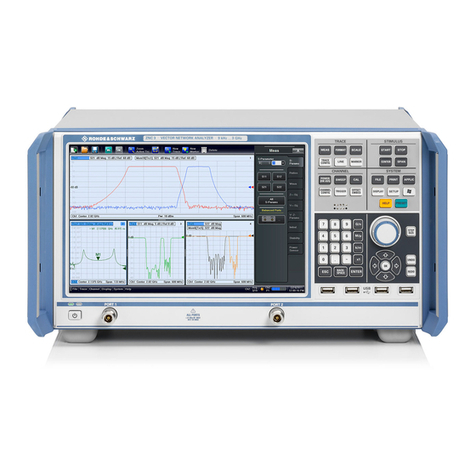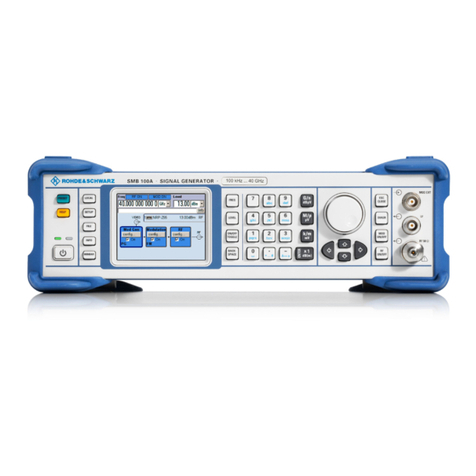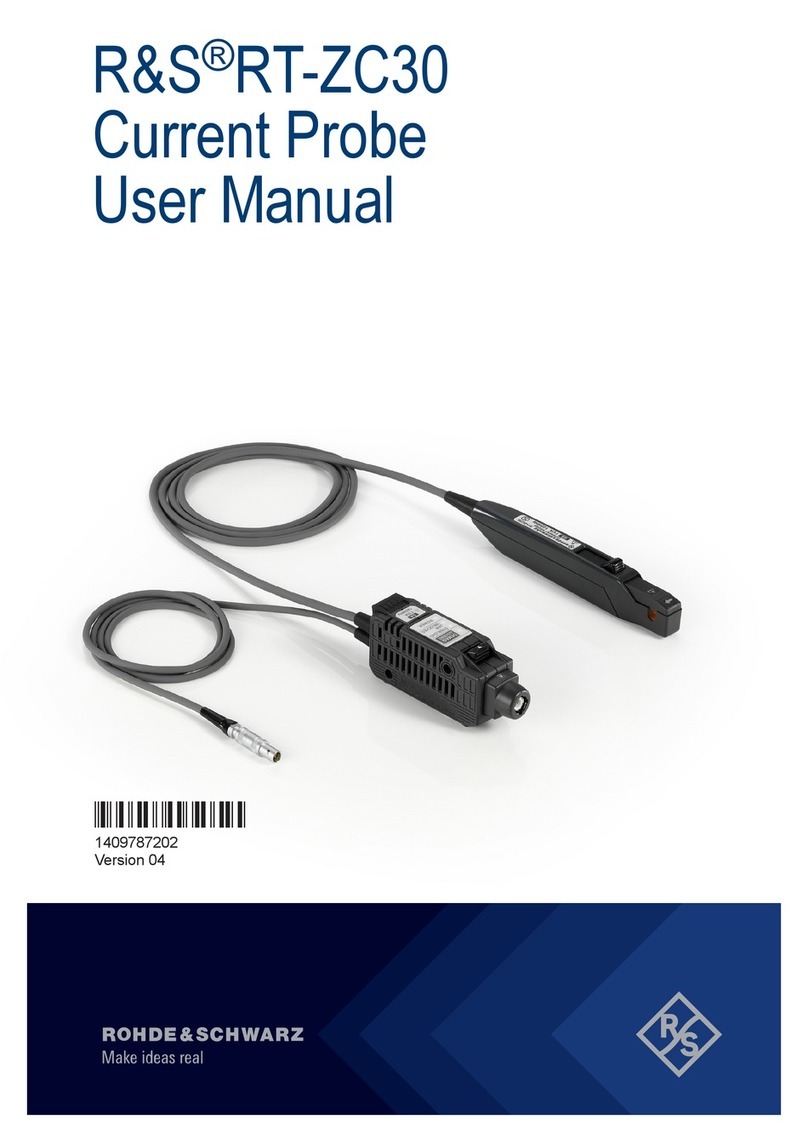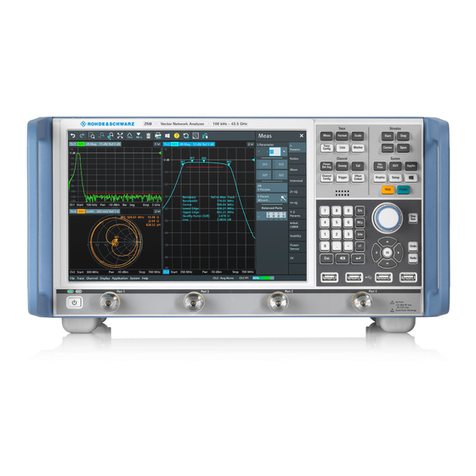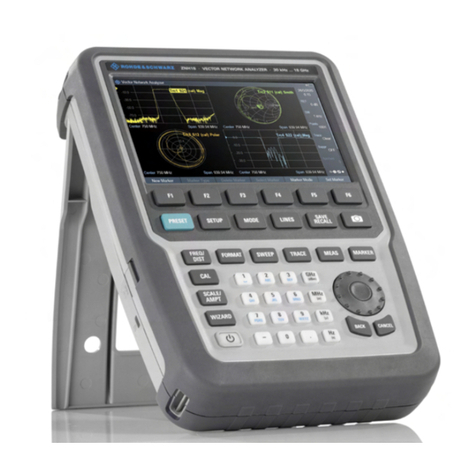
Preparing the Analyzer for Use
R&S®ZVA80
6Quick Start Guide 1312.6808.62 ─ 02
2 Preparing the Analyzer for Use
The R&S ZVA80 vector network analyzer supports two essentially different measurement
modes:
●Measurements with internal test sets cover a frequency range between 10 MHz and
approx. 50 GHz. On an R&S ZVA80 type 02 (stock no. 1312.6750.02), the DUT is
connected to the test port connectors PORT 1 and/or PORT 2 of the R&S ZVA80
base unit (BU). One and two-port measurements can be performed as described in
the R&S ZVA Quick Start Guide, stock number 1145.1090.62, and in the network
analyzer's help system.
The R&S ZVA80 types 03 and 04 (stock numbers 1312.6750.03 and 1312.6750.04)
are based on R&S ZVA50 vector network analyzers. The DUT can be connected to
any of the four test ports of the R&S ZVA50. One to four-port measurements are
supported.
●Measurements with external test sets cover an extended frequency range between
10 MHz and 80 GHz. The DUT is connected to the 1 mm connector(s) at the front of
the diplexers R&S ZVA-ZD80. This measurement mode is described in the present
manual.
This chapter describes the external test sets and their connection to the DUT and to the
R&S ZVA80 vector network analyzer. A typical measurement example is presented in
chapter 3, "Basic Operation", on page 23.
The measurement mode is selected in the "Frequency Converter" tab of the "System
Configuration" dialog: "NONE" for measurements with internal test sets, "ZVA80-BU" for
external test sets. See chapter 3.3, "Activating the ZVA80-BU Measurement Mode",
on page 23.
2.1 Operation with External Test Sets
The external test sets enable a frequency range between 10 MHz and 80 GHz. The
analyzer combines two different measurement methods to achieve this extended range.
●At frequencies below approx. 50 GHz (i.e. in "low frequency" mode), the frequency
converter in the external test set is bypassed. The source signals from test ports
PORT 1 / 2 of the R&S ZVA80 base unit are directly fed to the 1 mm test port con-
nectors of the diplexers. The analyzer measures the a-waves (reference channels)
from REF OUT and the b-waves (measurement channels) from MEAS OUT on the
diplexers. The connector groups PORT 3 / 4 on the R&S ZVA80 base unit and the
RF connectors LO IN, RF IN, REF OUT, MEAS OUT on the rear panel of the con-
verters are not used.
●To achieve frequencies above approx. 50 GHz (i.e. to measure in "high frequency"
mode), the source signals from test ports PORT 1 / 2 of the R&S ZVA80 base unit
are fed to the frequency converters; the converted signals are routed to the 1 mm
test port connectors of the diplexers. The frequency converters use frequency mul-
tipliers to transform the source signal into a high-frequency stimulus signal. An addi-
Operation with External Test Sets













